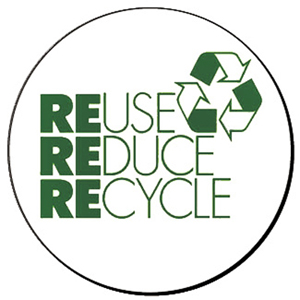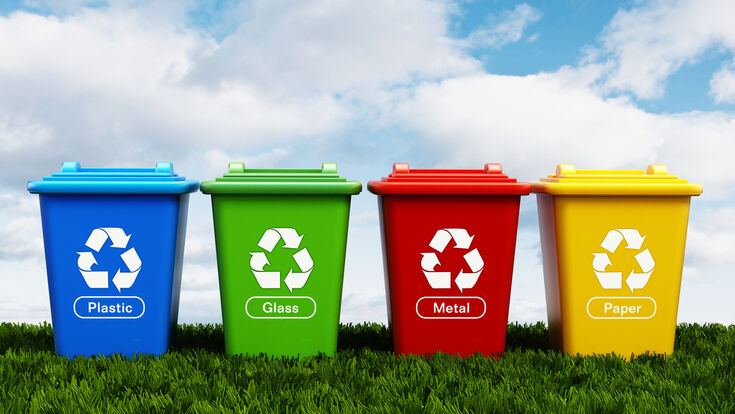Recycling Lives Services: Blazing A Trail in Accountable Recycling
Recycling Lives Services: Blazing A Trail in Accountable Recycling
Blog Article
Discovering Different Kinds Of Waste in Modern Waste Management Equipment
The modern landscape of waste monitoring includes navigating an intricate variety of waste types, each requiring specialized handling and disposal techniques to alleviate ecological influences. Municipal solid waste, contaminated materials, digital waste, and organic waste each present unique challenges and chances for resource recovery. Innovative remedies such as clever waste bins and waste-to-energy technologies are becoming crucial tools in enhancing performance and sustainability. Comprehending these waste types is crucial for promoting public understanding and motivating active engagement in sustainable techniques. What strategies can properly deal with these varied sorts of waste while promoting a round economy?
Municipal Strong Waste
Metropolitan strong waste, often described as family garbage or trash, encompasses a selection of discarded materials generated by property, commercial, and institutional sources within a district. This waste stream usually consists of things such as product packaging, food scraps, yard trimmings, paper, plastics, textiles, and thrown out family goods. The monitoring of metropolitan strong waste is a vital element of metropolitan preparation and public health, necessitating reliable collection, transportation, and disposal systems.
Effective waste monitoring systems are created to lessen ecological impact while making the most of source recovery. Composting natural waste, such as food scraps and yard trimmings, not just minimizes landfill use however additionally creates beneficial dirt changes.
Communities have to additionally address the financial and logistical challenges related to waste monitoring. Carrying out pay-as-you-throw systems, enhancing public recognition, and buying technology can considerably boost waste diversion prices. By incorporating these practices, communities can foster lasting neighborhoods, decrease greenhouse gas emissions, and save natural resources.
Contaminated Materials

Effective harmful waste administration involves several crucial actions: recognition, partition, disposal, and therapy. Recognition requires the classification of waste based on its unsafe homes. Segregation makes certain that hazardous products are stored independently from non-hazardous waste to stop cross-contamination. Therapy techniques, such as chemical neutralization, incineration, and stabilization, are employed to minimize the poisoning, volume, or flexibility of the waste. Ultimately, disposal alternatives, consisting of safe and secure land fills and underground storage, are chosen to guarantee long-term containment.
Regulative frameworks, such as the Resource Preservation and Recuperation Act (RCRA) in the USA, supply standards and requirements for contaminated materials management. Adherence to these policies, coupled with innovations in waste treatment innovations, is vital in reducing the risks related to unsafe waste.
Digital Waste
Electronic waste, generally described as e-waste, stands for a swiftly expanding challenge in waste monitoring systems worldwide. This sort of waste includes discarded digital gadgets and tools such as smart devices, computer systems, tvs, and other digital devices. The rapid rate of technological innovation, paired with decreasing product life-spans and consumer demand for the most up to date tools, has actually significantly boosted the volume of e-waste generated every year.
E-waste is especially troublesome due to its intricate make-up, typically consisting of unsafe substances like lead, mercury, and cadmium, which present significant ecological and health and wellness dangers otherwise effectively managed. On the other hand, e-waste likewise consists of beneficial materials such as gold, silver, and copper, which can be recovered and recycled. The dual nature of e-waste-- both dangerous and important-- demands customized handling, recycling, and disposal procedures.
Effective e-waste monitoring involves stringent regulative structures, robust collection systems, and advanced recycling technologies. Public understanding and participation are important, as inappropriate disposal methods, such as unlawful unloading and informal recycling, worsen environmental contamination and health dangers. Boosting e-waste monitoring techniques is vital go to this website for alleviating environmental impact and recovering important resources in a progressively digital world.

Organic Waste
Organic waste, making up kitchen area scraps, yard trimmings, and farming deposits, stands for a significant part of the worldwide waste stream. This kind of waste is biodegradable, meaning it can be damaged down by bacteria into easier natural compounds. Despite its possibility for all-natural decay, inappropriate management of organic waste can result in negative environmental influences, consisting of the discharge of greenhouse gases such as methane, which add to climate modification.
Effective management of organic waste is critical for minimizing these ecological impacts (recycling lives services). Composting is a commonly taken on method, transforming natural waste into nutrient-rich compost that can boost soil health and wellness and agricultural performance. In addition, anaerobic digestion is an arising technology that transforms natural waste into biogas, an eco-friendly energy source, and digestate, which can be used as plant food
Municipalities and waste management entities should execute durable organic waste collection and therapy programs to optimize the benefits of these procedures. Public education and learning projects can also play a critical function in encouraging families and organizations to different natural waste from various other kinds of waste. By focusing on the administration of organic waste, societies can lower land fill usage, reduced greenhouse gas discharges, and create valuable by-products for farming usage.

Innovative Waste Management
In the realm of waste management, innovative techniques are transforming just how societies handle their refuse, aiming for sustainability and efficiency. One prominent development is the implementation of clever waste bins equipped with sensing units that check fill degrees and maximize collection routes.
One more noteworthy growth is the adoption of waste-to-energy (WtE) technologies. By converting non-recyclable waste into useful power through processes such as incineration and anaerobic digestion, WtE decreases garbage dump concern and gives a renewable resource resource. In addition, innovations in chemical reusing allow for the breakdown of complex plastics right into their original monomers, enabling the creation of brand-new, top quality plastic items.
Additionally, the round economic climate design is gaining grip, highlighting the design of items and systems that prioritize reusability and resource effectiveness. This all natural method encourages markets to reduce waste generation go right here from the beginning. With these innovative approaches, contemporary waste administration systems are not just resolving the immediate challenges of garbage disposal but likewise paving the method for a wikipedia reference more sustainable future.
Conclusion
A comprehensive understanding of municipal solid waste, contaminated materials, electronic waste, and organic waste, combined with the execution of innovative waste administration services, is vital for minimizing environmental impacts. Incorporating innovations such as wise waste bins and waste-to-energy systems can enhance efficiency and sustainability. Efficient waste management strategies not just foster resource recuperation yet also advertise public recognition and involvement, inevitably contributing to the development of a circular economy.
The modern landscape of waste management entails browsing an intricate variety of waste kinds, each needing specialized handling and disposal methods to alleviate environmental effects. Community strong waste, dangerous waste, digital waste, and organic waste each existing distinct obstacles and opportunities for resource recovery.Digital waste, commonly referred to as e-waste, represents a quickly expanding challenge in waste management systems internationally. With these ingenious techniques, modern waste management systems are not only resolving the immediate obstacles of waste disposal but also leading the method for a much more lasting future.
A thorough understanding of local strong waste, unsafe waste, digital waste, and natural waste, combined with the application of cutting-edge waste monitoring solutions, is critical for minimizing environmental influences. (recycling lives services)
Report this page